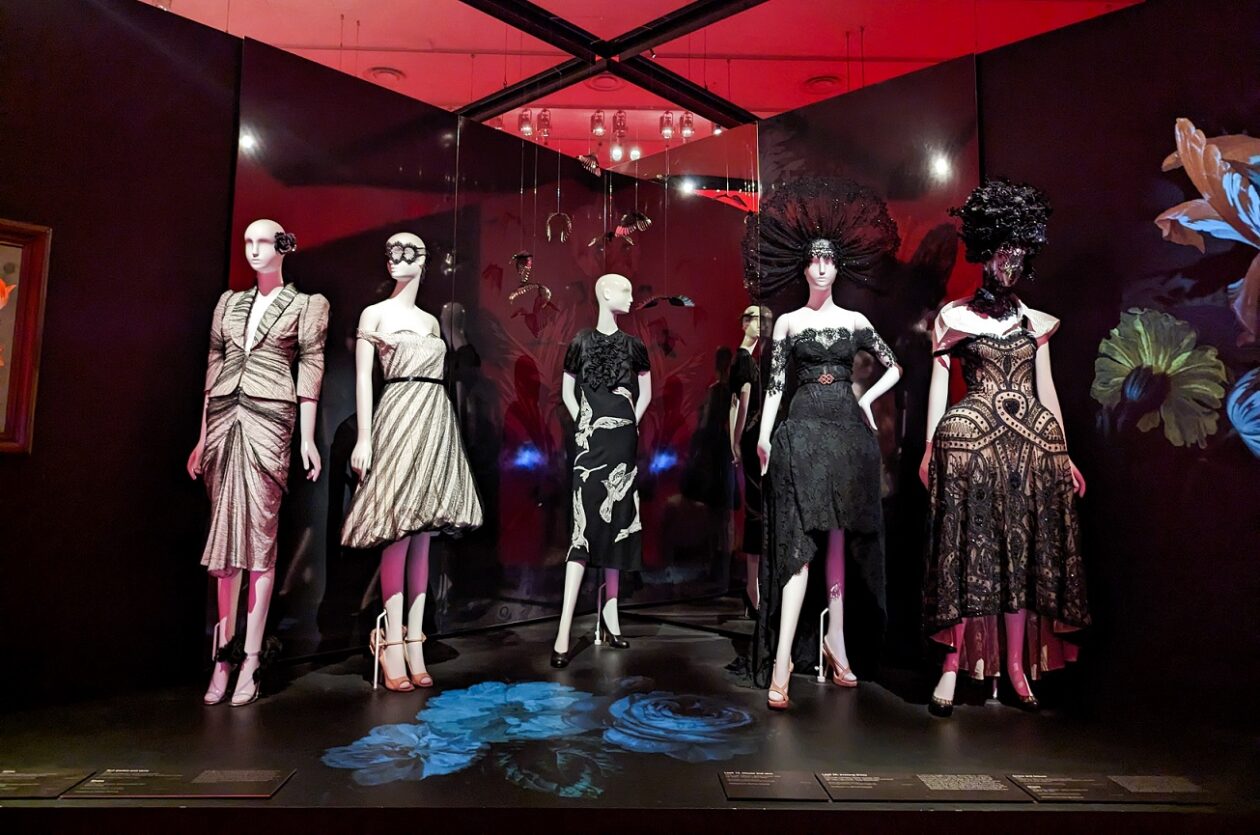
Alexander McQueen – Mind, Myth, Muse Exhibition
Not often you have the opportunity to appreciate the body of work of one of the most iconic designers in modern history, such as Alexander McQueen. When I started blogging more than a decade ago, I wrote a piece about his legacy which included imagery from his “Savage Beauty” exhibition in London and thought, he was indeed one of those geniuses whose opulent creations indeed deserved to be praised as nothing less than art.
So, when I heard about “Mind, Mythos, Muse” A retrospective showcase celebrating Alexander McQueen’s life and work at the NGV, I knew I had to visit Melbourne for a closer look into this designer’s world
Showcasing more than 120 garments and accessories, Alexander McQueen: Mind, Mythos, Muse takes us into McQueen’s inspiration alongside historical artworks, including painting, sculpture, photography, decorative arts that convey the designers’ creative process and interdisciplinary impulse that defined his career.
Artistically displayed the exhibition is segmented to best illustrate his varying visions. Mythos explores the influence of mythological and religious belief systems; Evolution and Existence explores the designer’s fascination with the natural world and its origins; Technique and Innovation unpacks the considerable tailoring and construction skills he used to dismantle conventions; Fashioned Narratives expands on his passion for history, fact and fiction; Dangerous Bodies demonstrates his penchant for a kind of aesthetic savagery.
You’ll be welcomed by the The Neptune collection from Spring Summer 2006, which borrows references of ancient Rome and Greece with representations of soldiers, gladiators, marble sculptures and architecture to infuse strength to the woman wearing his creations.
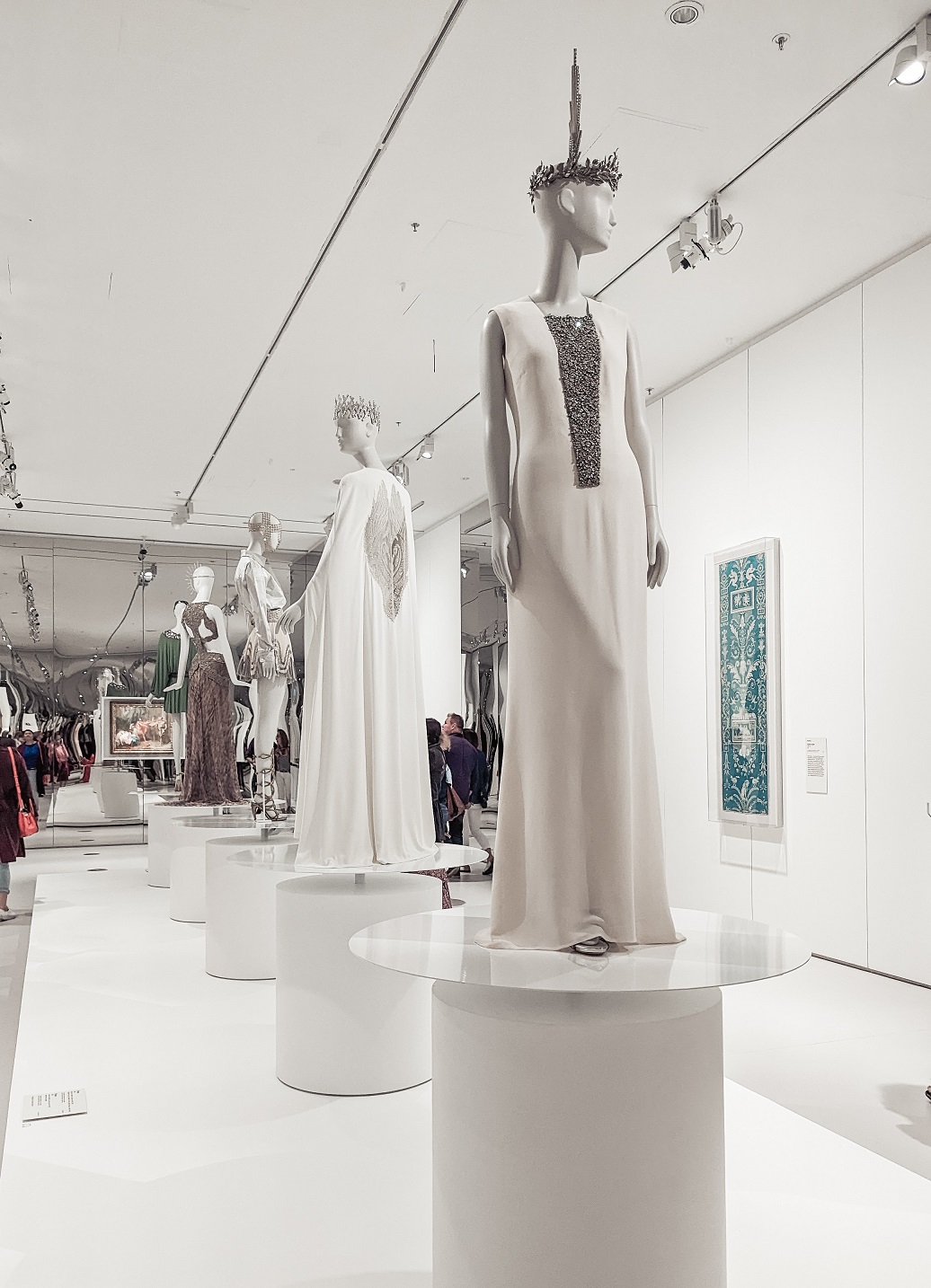
The untitled collection, autumn–winter 2010–11, posthumously called Angels and Demons, references Christian iconography from the Byzantine Empire as well as the northern and Italian Renaissance. Through the collection, the existential dualities of heaven and hell, sin and redemption, and damnation and salvation are explored.
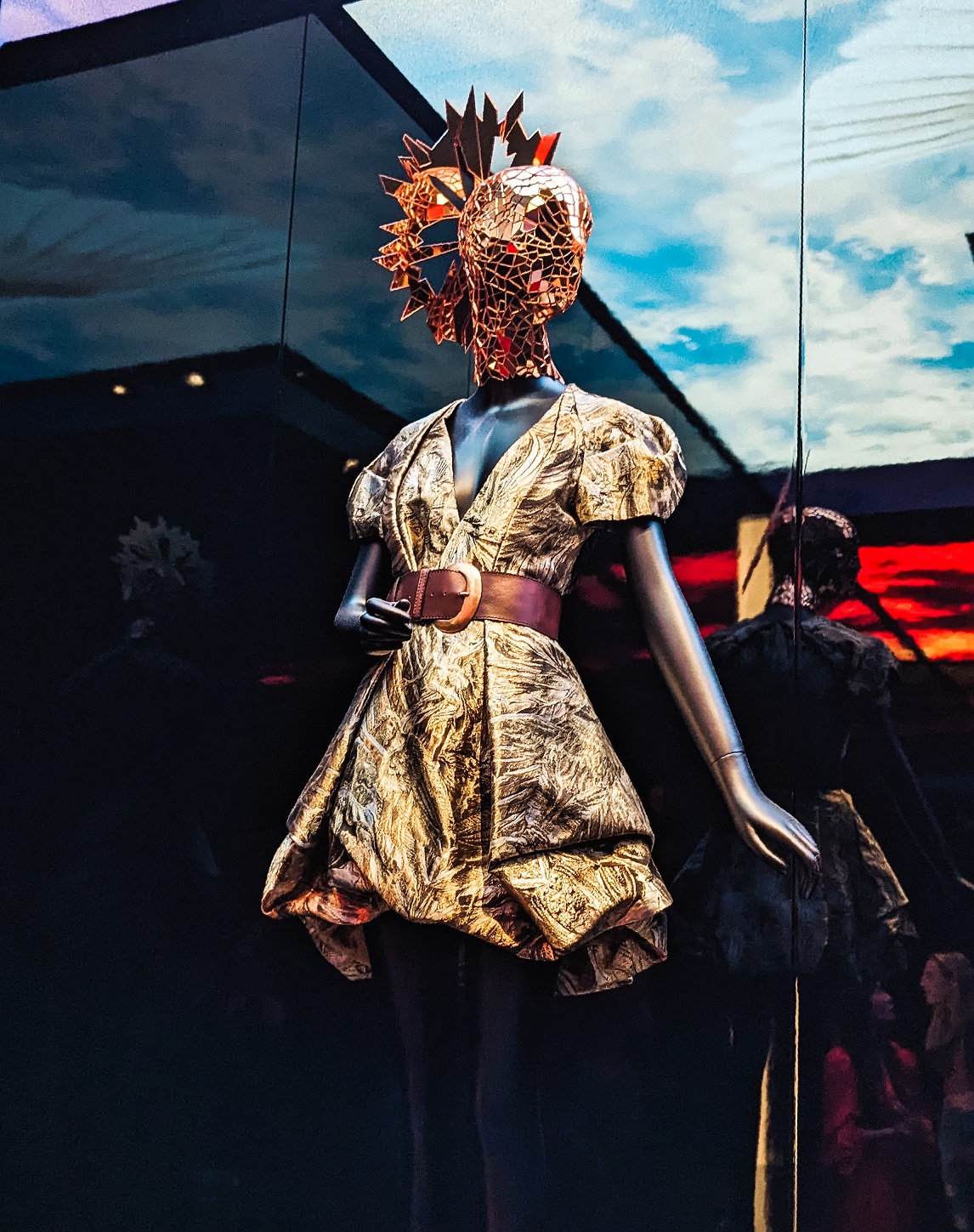
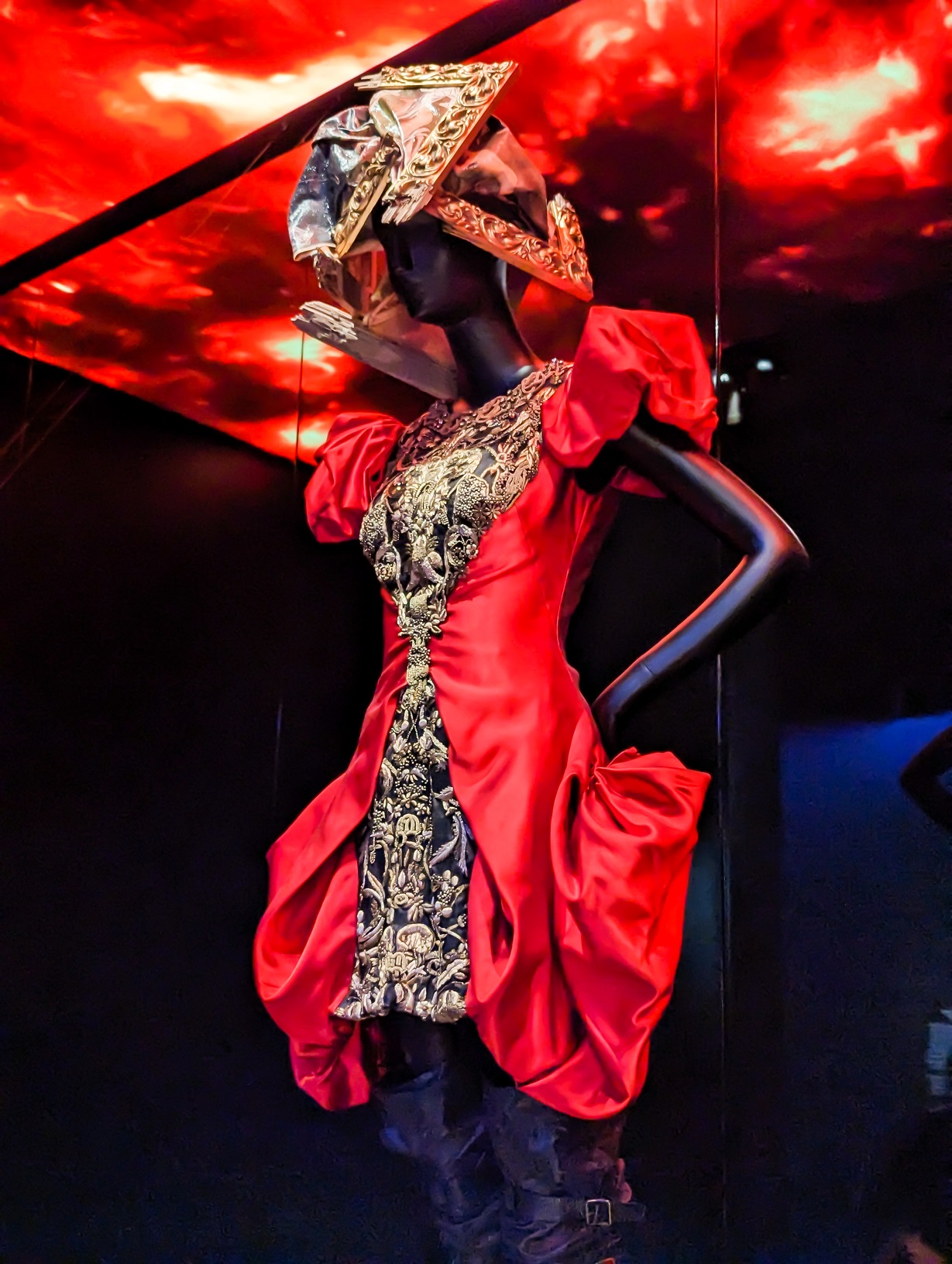
Rooted in McQueen’s personal history and romanticised historical references, his narrative-driven collections explore themes of tradition, discovery, exchange, power, persecution, violence and metamorphosis.
The Widows of Culloden, autumn–winter 2006–07, explores McQueen’s Scottish ancestry, condemning British colonialism and violence in eighteenth-century Scotland. In Memory of Elizabeth How, Salem, 1692, autumn–winter 2007–08, traces the designer’s familial background to colonial Massachusetts to pay tribute to distant ancestors executed in the Salem witch trials.
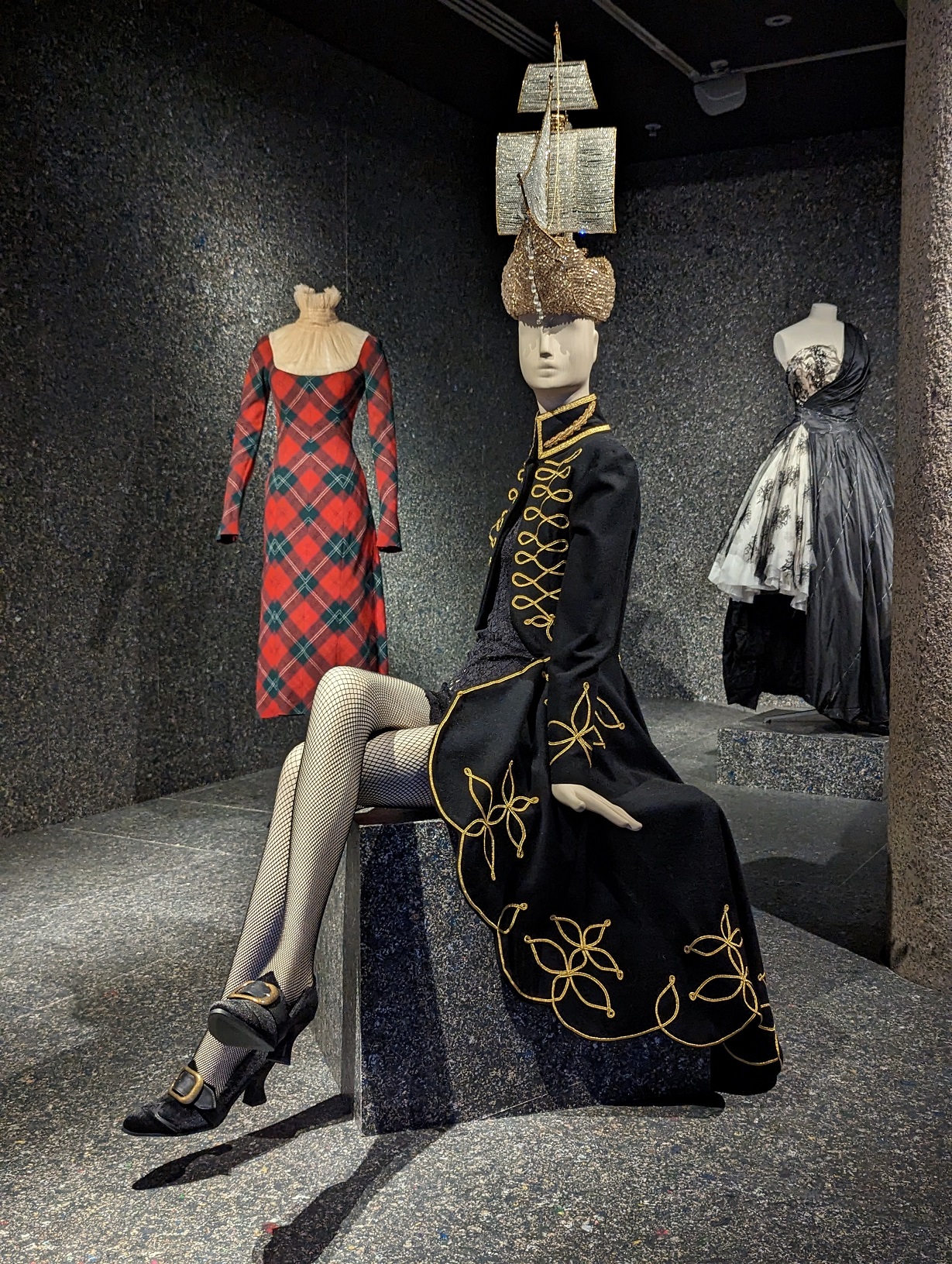
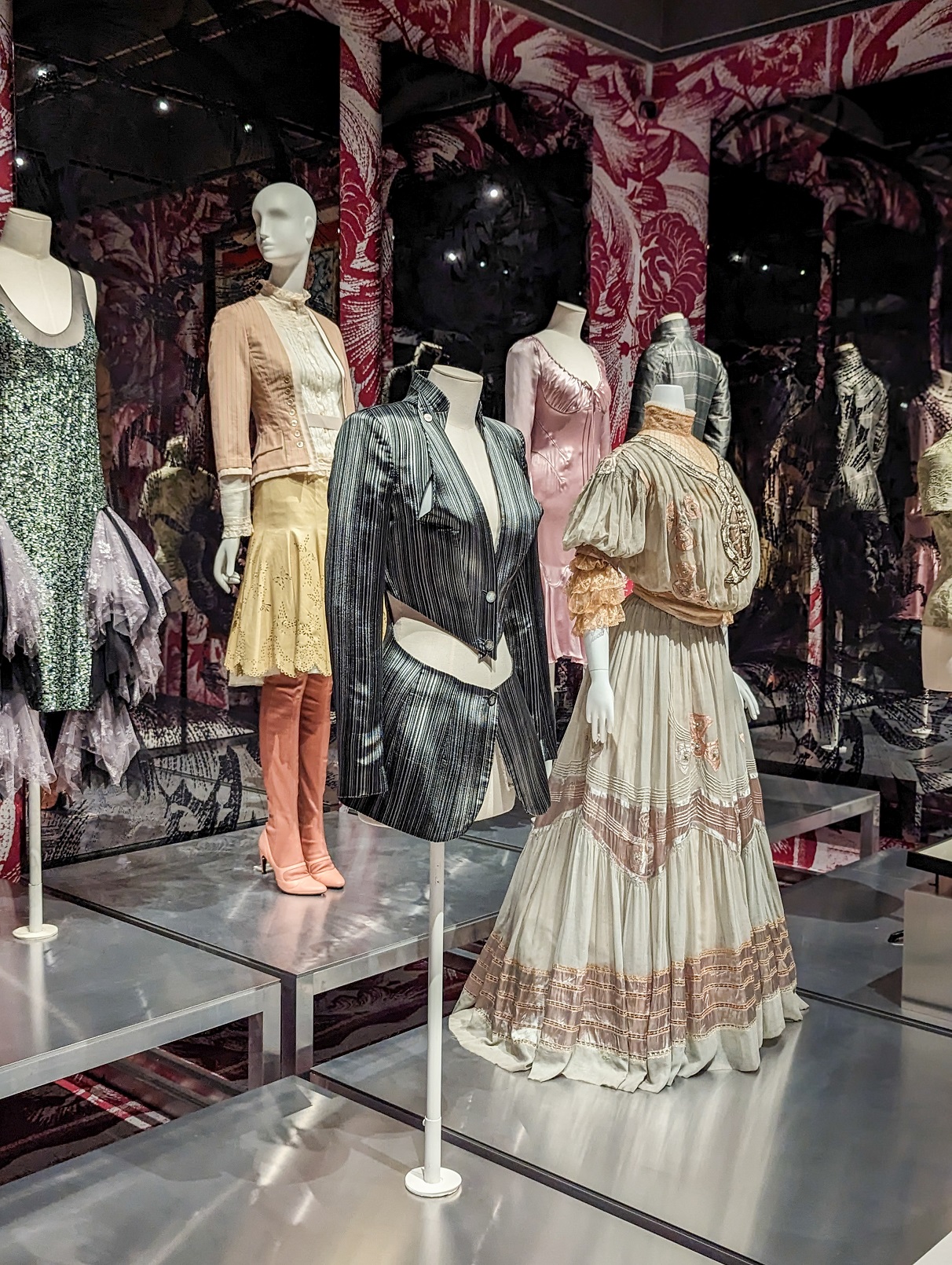

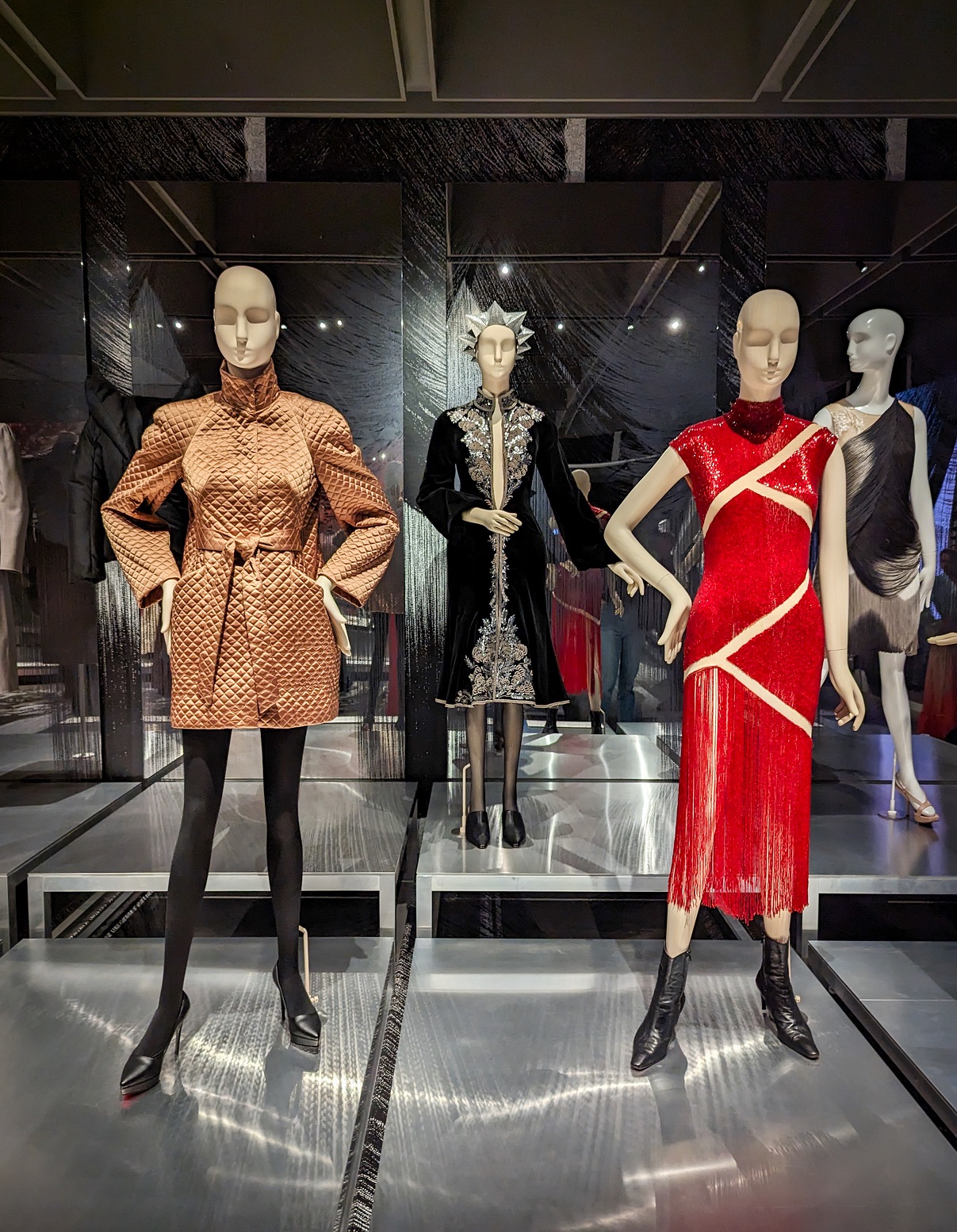
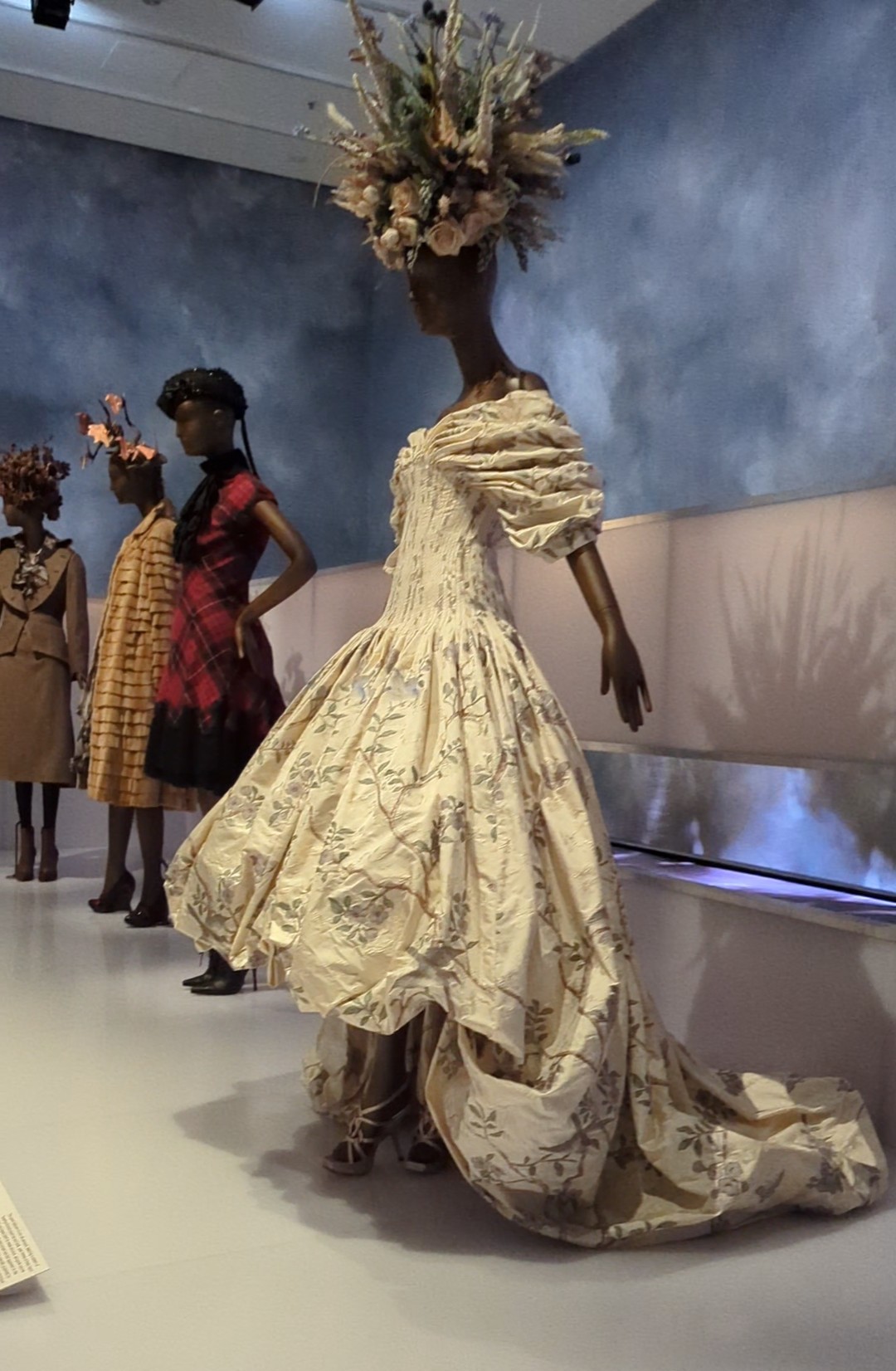
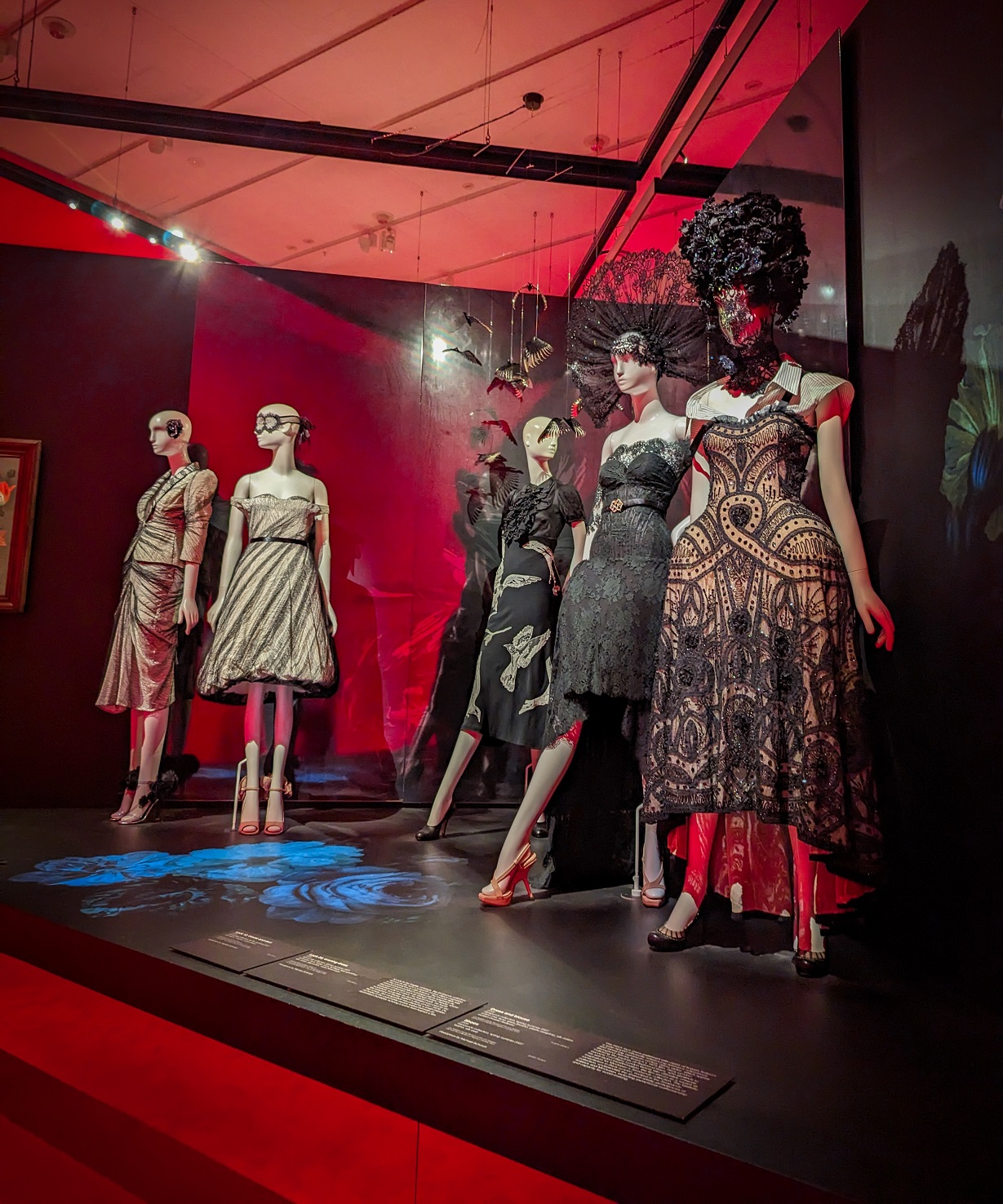
Alexander McQueen’s use of inventive fabrics, surface treatments and photorealist imagery expresses his appreciation for both historical and emerging technology. The Natural Dis-tinction, Un-Natural Selection collection, spring–summer 2009, was pioneering in its use of digitally engineered and printed textile designs to reinforce McQueen’s artistic concepts. Other surface treatments, such as quilting, beading and fringing, were inspired by McQueen’s fashion predecessors, including Charles James, or muses, like his friend and patron Isabella Blow.

If you’re in Melbourne or planning to visit you still have chance until the 16th of April.

